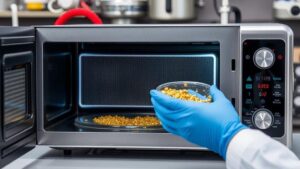How to Maximize Gold Recovery in Dry Environments With Air Flow Tools
Understanding Gold Recovery in Dry Environments
Gold recovery in dry environments presents unique challenges compared to traditional wet mining techniques. The absence of moisture can make it difficult to separate gold particles from waste materials effectively. But, advancements in technology, particularly in air flow tools, have significantly improved the efficiency of gold recovery in arid regions.
The Role of Air Flow Tools in Gold Recovery
Air flow tools are essential in optimizing gold recovery, as they utilize controlled airflow to enhance the separation of gold from other materials. e tools can include air classifiers, cyclone separators, and pneumatic processing systems. Each of these technologies leverages air movement to create differential forces that allow for more effective separation.
Air Classifiers
Air classifiers use a stream of air to separate particles based on their size and weight. In gold recovery, air classifiers can effectively differentiate between heavier gold particles and lighter waste materials. use of air classifiers can improve concentration ratios significantly.
Cyclone Separators
Cyclone separators employ centrifugal forces generated by spinning air to separate materials. In dry environments, these devices can capture fine gold particles while effectively removing lighter waste materials. Studies show that cyclone separators can achieve efficiencies exceeding 90% for gold recovery, making them a viable choice for dry mining operations.
Pneumatic Processing Systems
Pneumatic systems transport materials using air pressure, allowing for the movement of ore to extraction points without the need for water. e systems can be integrated into mobile units for site flexibility, making them ideal for remote dry mining locations.
Techniques for Maximizing Gold Recovery
Useing the right techniques while utilizing air flow tools can greatly enhance gold recovery rates. Below are key strategies to consider:
- Optimize Equipment Settings: Adjusting the airflow speed and pressure settings can lead to improved separation efficiency. Testing different configurations to find the optimal settings for specific ore types is crucial.
- Use a Multi-Stage Recovery Process: Employing multiple recovery stages with varying air flow tools allows for incremental improvement in recovery rates. This approach helps capture both coarse and fine gold.
- Regular Maintenance: Keeping equipment well-maintained will ensure consistent performance. Regular cleaning can prevent build-up that may hinder airflow and efficiency.
- Data Analysis: Monitoring recovery rates and processing conditions helps identify areas for improvement. Data-driven adjustments can lead to continuous gains in efficiency.
Case Studies and Real-World Applications
Several mining operations around the world have successfully utilized air flow tools in dry environments to increase gold recovery rates. For example, a mining operation in the Mojave Desert implemented cyclone separators in conjunction with traditional screening methods. As a result, they reported a 30% increase in gold recovery over the previous year, driven by the efficiency of the cyclone technology.
Conclusion
Maximizing gold recovery in dry environments can be accomplished effectively through the strategic use of air flow tools. By understanding the unique properties of these tools and implementing best practices, miners can achieve significant improvements in recovery rates. As the industry continues to evolve, incorporating advanced technologies and techniques will be key to overcoming the challenges presented by arid mining conditions.
Actionable Takeaways
- Evaluate your current recovery methods and consider integrating air flow tools.
- Perform trials to find optimal equipment settings for your specific materials.
- Invest in regular training and maintenance for crew members to ensure equipment is used to its full potential.
- Embrace data analysis to continually refine processes and improve recovery rates.

